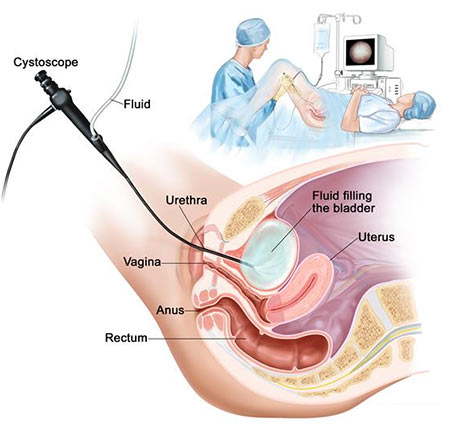Contents
Cystography is a common x-ray examination in which the bladder is filled with a suitable contrast agent (called contrast) that is inserted through a catheter. Cystography is performed in case of suspicion of various diseases related to the urinary system.
Why and when is cystography performed?
Cystographic examination allows for the detection of possible abnormalities in the functioning and shape of the bladder. It is a very accurate examination that allows you to precisely reconstruct the shape and structure of the bladder.
Cystography is most often performed when urinary tract diseases are suspected. The most common reasons include:
- congenital defects and deformities of the urinary system,
- acquired injuries within the bladder or urethra,
- suspicion of diverticula or neoplastic tumors within the bladder,
- urinary incontinence problems,
- bed wetting (especially in children)
- disturbance in the flow of the urine, so-called vesicoureteral reflux (urine flowing back into the ureters).
Contraindications to performing cystography
Cystography is a relatively safe examination. Nevertheless, it is necessary to point out some of the most important contraindications to its implementation. First of all, acute urinary tract infections should be mentioned. In this case, cystography should not be performed. Cystography is also not recommended in pregnant women. Occasionally, a pregnancy test is performed on adult women before cystography is performed. Also, do not perform cystography in the case of people allergic to the contrast used during the examination.
The course of cystography
Appropriate preparations should be made prior to cystography. The most important thing is to urinate; an empty bladder is a prerequisite for a thorough and precise examination. It is also good to take care of your own hygiene before the examination and wash your intimate places thoroughly.
Performing cystography begins with the patient assuming the supine position. A catheter is then inserted into his bladder. A suitable contrast agent is injected through the catheter. When the center fills the bladder, an unpleasant sensation appears. Usually, performing cystography is not associated with pain, but only a strong feeling of pressure in the bladder. X-rays of the bladder are taken in the bladder that is filled with contrast. Pictures should be taken from different perspectives and in different positions of the patient’s body. Upon completion of the examination, the catheter is removed from the patient’s bladder.
Victory cystography
Victory cystography, also known as voiding cystourethrography, is a test performed when you have problems with urinary incontinence. This test is often performed on boys and girls who have this condition.
Victory cystography is performed during urination. Thanks to this, it allows you to assess the level of functioning of the urinary tract. They are performed especially when a child is suspected of having potential birth defects that could cause the symptoms of enuresis or urinary incontinence. The most frequently diagnosed problems during voiding cystography include: deposits clogging the urinary tract, diverticula, neoplastic changes in the bladder, mechanical injuries of the urethra or bladder.
The commencement of voiding cystography requires the consumption of about half a liter of fluids before the examination. Immediately before the cystography is performed, the bladder is emptied. Then, the doctor places a catheter on the patient and injects the contrast. After its administration, the patient empties the bladder, during which X-rays called cystograms are taken. Upon completion of the examination, the catheter is removed. This test is usually performed without anesthesia.
Complications after voiding cystography
In the case of microvascular cystography, there are several possible ailments caused by the examination. The most common is pollakiuria, i.e. increased frequency of urination in small doses. Moreover, unpleasant sensations such as burning, stinging or stinging pain may appear during urination. In addition, as a result of micturition cystography, the color of the urine may change from yellow to slightly pink. All these symptoms indicate possible tissue irritation of the urethra or bladder during the examination.










